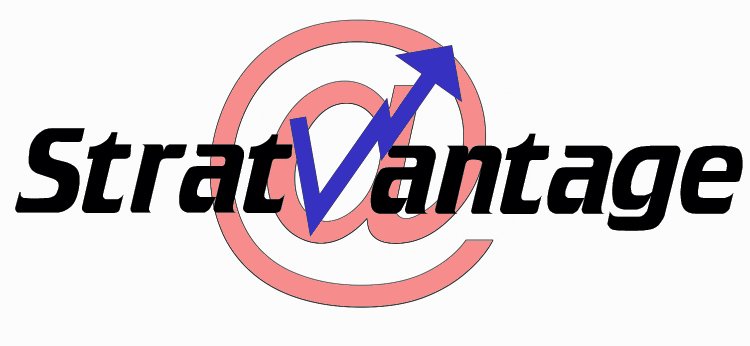From Evernote: |
StratVantage Consulting, LLC — Mike’s Take on the News 05/09/01Clipped from: http://www.stratvantage.com/news/050901.htm |
The News – 05/09/01
The Accelerating Pace of Change
Ray Kurzweil is an inventor and a deep thinker about the future. He’s also perhaps a bit odd, having performed White Rabbit as a virtual reality female named Ramona at the recent TED XI Conference in Monterey, CA in February. He’s invented many innovative things, from synthesizers to speech recognition. And he’s finally put into words something which we all have probably sensed: the rapidly accelerating pace of change.
In a book précis for his upcoming book, The Singularity is Near, Kurzweil asserts that we’re doubling the rate of progress every decade, which will result in a century’s worth of technological change in only 25 calendar years. He says that we tend to think of the rate of change as constant, and adjust to this acceleration automatically. When people make predictions about how long it will take to accomplish some innovation, they unconsciously base their estimates on a constant rate of change. Kurzweil argues that the rate of change is actually exponential, and this is the characteristic of any evolutionary system.
Kurzweil calls this the law of accelerating returns and he claims it has been in effect since the beginning of the evolution of life.
The first technological steps-sharp edges, fire, the wheel–took tens of thousands of years. For people living in this era, there was little noticeable technological change in even a thousand years. By 1000 A.D., progress was much faster and a paradigm shift required only a century or two. In the nineteenth century, we saw more technological change than in the nine centuries preceding it. Then in the first twenty years of the twentieth century, we saw more advancement than in all of the nineteenth century. Now, paradigm shifts occur in only a few years time. The World Wide Web did not exist in anything like its present form just a few years ago; it didn’t exist at all a decade ago.
The paradigm shift rate (i.e., the overall rate of technical progress) is currently doubling (approximately) every decade; that is, paradigm shift times are halving every decade (and the rate of acceleration is itself growing exponentially). So, the technological progress in the twenty-first century will be equivalent to what would require (in the linear view) on the order of 200 centuries. In contrast, the twentieth century saw only about 25 years of progress (again at today’s rate of progress) since we have been speeding up to current rates. So the twenty-first century will see almost a thousand times greater technological change than its predecessor.
I often ask a question of my audience when I speak: “How many of you think the pace of change will slow in the future?” I’ve never had a hand go up. Businesses need to understand that they can’t stick their heads in the sand and hope that the paradigm shift of the day (dotcoms, B2B exchanges, peer-to-peer computing, wireless, whatever) will blow over and they can go back to the old ways of doing things.
The obvious joy felt by the bricks and mortar businesses at the dotcom implosion may have been a smug pleasure (“I told you they wouldn’t last”), but the innovations the Internet has introduced won’t go away. Sure, lots of essentially worthless dotcoms have blown away. And it’s fun to ridicule the excesses of the 20-something dotcommies and their lack of class in handling their short-lived success. But the reality is, something has fundamentally changed about business, and that bell can’t be unrung.
Your business’ ability to absorb change and to recognize paradigm shifts will be its most critical success factor in the coming years. Those who can’t foresee how the need for their products can disappear are doomed to go the way of the buggy whip manufacturers of last century. Heck, forget the buggy whip companies, they’ll go the way of modern long distance providers, who have seen Internet long distance providers drive rates to under 7 cents a minute, generating a problem so severe that the Baby Bells no longer hunger for the long distance market.
What new idea is sprouting in a garage somewhere that will threaten your business?
Briefly Noted
· IBM has announced they’ve created transistors using nanotubes of carbon that are 10 atoms across. This yields transistors 500 times smaller than today’s silicon-based ones.
· Think that’s small? How about packing a terabyte (1,000 gigabytes) into a cubic centimeter?
· Today I spoke at the Eleventh Annual EC Breakfast with Executives sponsored by the Twin Cities Electronic Commerce Forum. My topic was Boom or Gloom? The Future of B2B Exchanges, and the PowerPoint is available here .
Can’t Get Enough of ME?
In the unlikely event that you want more of my opinions, I’ve started a Weblog. It’s the fashionable thing for pundits to do, and I’m doing it too. A Weblog is a datestamped collection of somewhat random thoughts and ideas assembled on a Web page. If you’d like to subject the world to your thoughts, as I do, you can create your own Weblog. You need to have a Web site that allows you FTP access, and the free software from www.blogger.com . This allows you to right click on a Web page and append your pithy thoughts to your Weblog.
I’ve dubbed my Weblog entries “Stratlets”, and they are available at www.stratvantage.com/stratlets/ . Let me know what you think. Also check out the TrendSpot for ranking of the latest emerging trends.
Return to Mike’s Take


